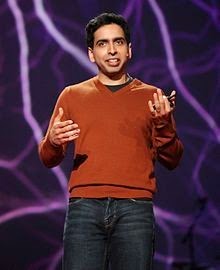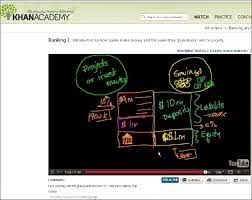History has given us
true heroes but we sometimes fail to recognize the heroes of today. It
has been decades that we have been hearing from governments of all
countries that they are working for the poor. But as it was destined to,
an individual stepped forward and made a significant difference. For
all those who know Muhammad Yunus, you might be knowing about his
achievements in rural upliftment. For those who don't, you are at the
right place. The coming paragraphs would enlighten you with the
contributions made by Muhammad Yunus.
Muhammad Yunus is an Bangladeshi banker, economist and Nobel Peace Prize recipient.
As a professor of economics, he developed the concepts of microcredit and microfinance. These loans are given to entrepreneurs too poor to qualify for traditional bank loans. In 2006 Yunus and Grameen Bank received the Nobel Peace Prize "for their efforts through microcredit to create economic and social development from below". Yunus has received several other national and international honours. He was awarded the U.S. Congressional Gold Medal in 2010, and presented with it at a ceremony at the U.S. Capitol on 17 April 2013.

The Idea that changed lives -
In 1976, during visits to the poorest households in the village of Jobra near Chittagong University, Yunus discovered that very small loans could make a disproportionate difference to a poor person. Village women who made bamboo furniture had to take usurious loans to buy bamboo, and repay their profits to the lenders. Traditional banks did not want to make tiny loans at reasonable interest to the poor due to high risk of default. But Yunus believed that, given the chance, the poor will repay the money and hence microcredit was a viable business model. Yunus lent US$27 of his money to 42 women in the village, who made a profit of BDT 0.50 (US$0.02) each on the loan.

Grameen Bank -



Muhammad Yunus is an Bangladeshi banker, economist and Nobel Peace Prize recipient.
As a professor of economics, he developed the concepts of microcredit and microfinance. These loans are given to entrepreneurs too poor to qualify for traditional bank loans. In 2006 Yunus and Grameen Bank received the Nobel Peace Prize "for their efforts through microcredit to create economic and social development from below". Yunus has received several other national and international honours. He was awarded the U.S. Congressional Gold Medal in 2010, and presented with it at a ceremony at the U.S. Capitol on 17 April 2013.

The Idea that changed lives -
In 1976, during visits to the poorest households in the village of Jobra near Chittagong University, Yunus discovered that very small loans could make a disproportionate difference to a poor person. Village women who made bamboo furniture had to take usurious loans to buy bamboo, and repay their profits to the lenders. Traditional banks did not want to make tiny loans at reasonable interest to the poor due to high risk of default. But Yunus believed that, given the chance, the poor will repay the money and hence microcredit was a viable business model. Yunus lent US$27 of his money to 42 women in the village, who made a profit of BDT 0.50 (US$0.02) each on the loan.

Grameen Bank -
Grameen Bank is founded on
the principle that loans are better than charity to interrupt poverty:
they offer people the opportunity to take initiatives in business or
agriculture, which provide earnings and enable them to pay off the debt.
The
bank is founded on the belief that people have endless potential, and
unleashing their creativity and initiative helps them end poverty. Grameen
has offered credit to classes of people formerly underserved: the poor,
women, illiterate, and unemployed people. Access to credit is based on
reasonable terms, such as the group lending system and
weekly-installment payments, with reasonably long terms of loans,
enabling the poor to build on their existing skills to earn better
income in each cycle of loans.
Grameen’s objective has been to
promote financial independence among the poor. Yunus encourages all
borrowers to become savers, so that their local capital can be converted
into new loans to others. Since 1995, Grameen has funded 90 percent of
its loans with interest income and deposits collected, aligning the
interests of its new borrowers and depositor-shareholders. Grameen
converts deposits made in villages into loans for the more needy in the
villages (Yunus and Jolis 1998).
It targets the poorest of the poor,
with a particular emphasis on women, who receive 95 percent of the
bank’s loans. Women traditionally had less access to financial
alternatives of ordinary credit lines and incomes. They were seen to
have an inequitable share of power in household decision making. Yunus
and others have found that lending to women generates considerable
secondary effects, including empowerment of a marginalized segment of
society (Yunus and Jolis 1998), who share betterment of income with
their children, unlike many men. Yunus claims that in 2004, women still
have difficulty getting loans; they comprise less than 1 percent of
borrowers from commercial banks (Yunus 2004).The interest rates charged
by microfinance institutes including Grameen Bank is high compared to
that of traditional banks; Grameen's interest (reducing balance basis)
on its main credit product is about 20%.
Learnings -
1) Support Talent
One key learning is that talent should not be wasted for want of
money. Many people give up their passions because they cannot sustain
them. As an individual or manager, one should support such causes.

2) Reward Deserving Candidates
Proper recognition and reward to deserving candidates urges them
to perform better the next time. As a manager, one should be able to
recognize and vocal about good work.

3) Success comes the hard way
As is evident from Muhammad Yunus's example, there are no
short-cuts to success and that should be made clear to everyone in the
organization. One should be prepared to work hard for long term success
and recognition.

I hope all those who weren't aware of
Muhammad Yunus have finally understood the significant contribution of
him towards the upliftment of the poor. Such inspiring stories keep me
striving hard to achieve more and I hope it motivates millions around
the world. Happy learning, happy blogging !




















